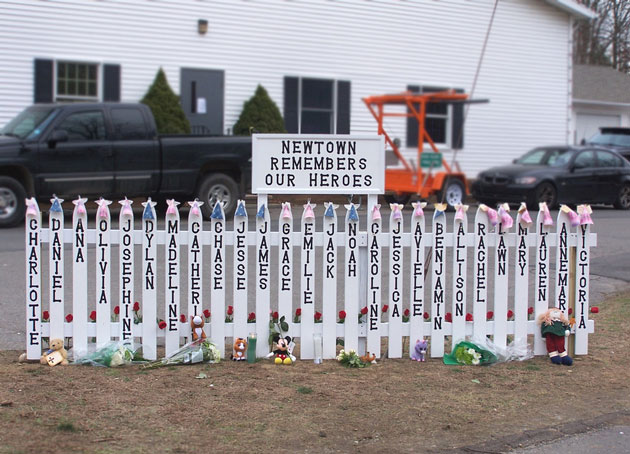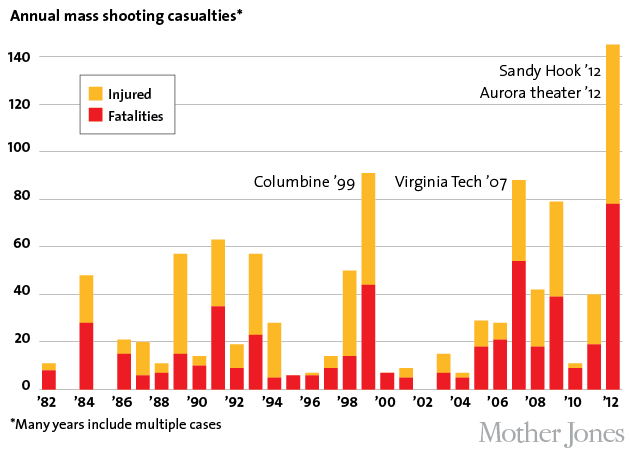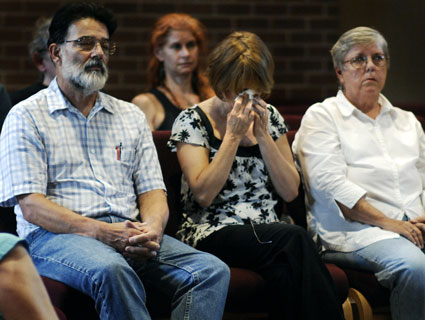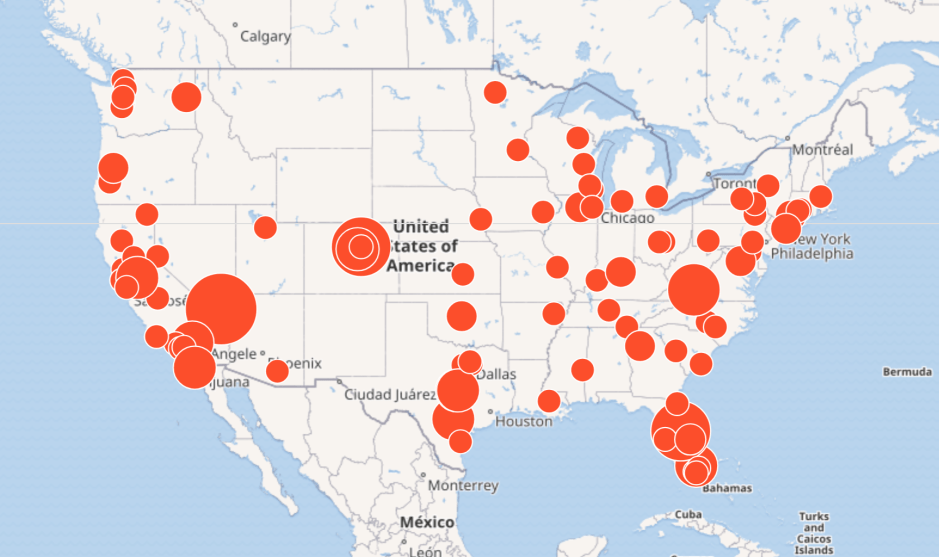Update, December 16, 2012: In the wake of the massacre at Sandy Hook Elementary in Newtown, a story from the Associated Press suggested that mass shootings have not increased in the United States in recent years. But the AP cited research that uses broader criteria than the criteria we used for our investigation, which found an increase. Here is our approach, explained:
What is a mass shooting?
Broadly speaking, the term refers to an incident involving multiple victims of gun violence. But there is no official set of criteria or definition for a mass shooting, according to criminology experts and FBI officials contacted by Mother Jones.
Generally, there are three terms you’ll see to describe a perpetrator of this type of gun violence: mass murderer, spree killer, or serial killer. An FBI crime classification report from 2005 identifies an individual as a mass murderer if he kills four or more people in a single incident (not including himself), typically in a single location. (The baseline of four fatalities is key—more on that just below.)
The primary distinction between a mass murderer and a spree killer, according to the FBI, is that the latter strikes in multiple locations, though still in a relatively short time frame. The third type, a serial killer, is distinguished by striking over a longer time frame, in multiple locations, with opportunity for what the FBI report refers to as “cooling-off periods” in between attacks.
How often do mass shootings occur?
Beginning in July, after the movie theater slaughter in Aurora, Colorado, we documented and analyzed 62 mass shootings from the last 30 years. As we delved into the research, we realized that robust data on this subject was hard to come by, in part due to the lack of clear criteria. We were focused on the question of how many times Aurora-like events had actually happened. We honed our criteria accordingly:
- The attack must have occurred essentially in a single incident, in a public place;
- We excluded crimes of armed robbery, gang violence, or domestic violence in a home, focusing on cases in which the motive appeared to be indiscriminate mass murder;
- The killer, in accordance with the FBI criterion, had to have taken the lives of at least four people.
The traumatic events included in our guide to mass shootings are the kind that tend to grab national attention—school and workplace shootings, attacks in shopping malls or government buildings—but they represent only a sliver of America’s gun violence, which results in approximately 30,000 deaths annually.
Since the 1980s, the baseline of four fatalities has generally been used for studying mass murder, according to Professor James Alan Fox of Northeastern University, who has written multiple books on the subject. But as Fox agreed when we spoke, that baseline ultimately is arbitrary. Was it not a “mass shooting” in 2008, for example, when a man walked into a church in Tennessee and opened fire with a shotgun, killing two and injuring seven? Dropping the number of fatalities by just one, or including motives of armed robbery, gang violence, or domestic violence, would add many, many more cases to the list.
According to a recent report in Time magazine (available only to subscribers, and whose criteria is unclear), there’ve been “nearly 20 mass shootings” every year on average during the last three and a half decades.
Why didn’t you include the infamous DC Beltway sniper attacks on your mass shootings map?
We’ve been asked this question numerous times. The man who killed 10 and wounded 3 others a decade ago (along with a young accomplice) was a serial killer: He committed multiple attacks over several weeks, in different locations. It was a particularly tense time for people living in the DC metro area—the shooter “terrorized our neighborhood,” as one person wrote to me in an email—but the case did not fit the criteria described above.
Is Mother Jones focusing on this stuff as part of a conspiracy to take away Americans’ gun rights?
No. One of our lead reporters on this beat, Adam Weinstein, who covered the Trayvon Martin killing and investigated how the National Rifle Association helped spread “Stand Your Ground” laws nationwide, is a Navy veteran and third-generation gun owner. Multiple other Mother Jones staffers are experienced with guns.
The debate over guns in the United States is extremely contentious and polarizing, and we think that the more reporting and clear data available about guns, the better. That mass shootings keep happening is an undeniable fact. Why they do, and how to stop them, is a matter for further investigation.
Update, January 8, 2013: Where can I learn more about MoJo’s investigation?
See our recently published America Under the Gun: a Special Report on gun laws and the rise of mass shootings, which contains interactive maps, charts, and dozens of stories from over the last year.

















